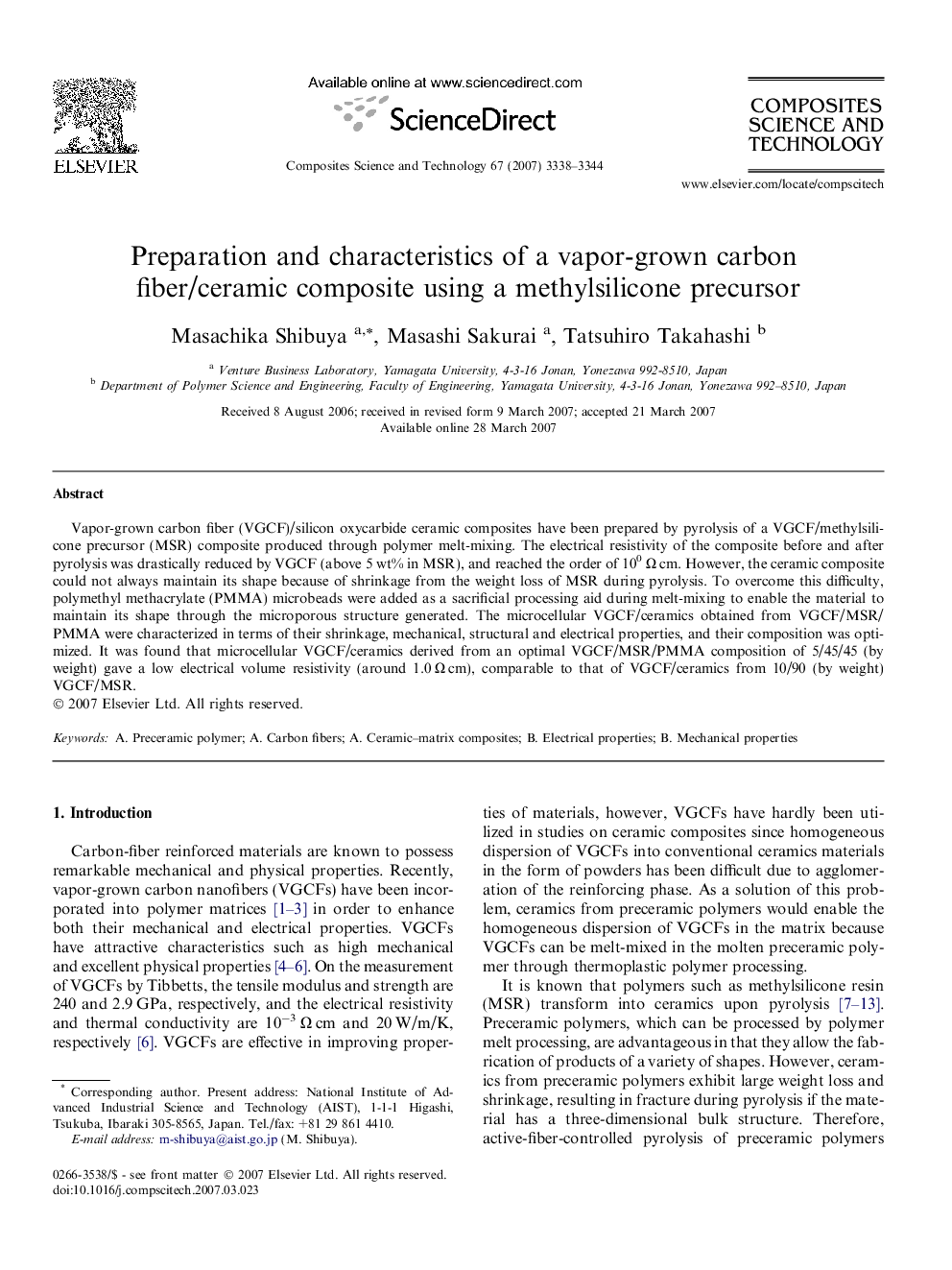| Article ID | Journal | Published Year | Pages | File Type |
|---|---|---|---|---|
| 821697 | Composites Science and Technology | 2007 | 7 Pages |
Vapor-grown carbon fiber (VGCF)/silicon oxycarbide ceramic composites have been prepared by pyrolysis of a VGCF/methylsilicone precursor (MSR) composite produced through polymer melt-mixing. The electrical resistivity of the composite before and after pyrolysis was drastically reduced by VGCF (above 5 wt% in MSR), and reached the order of 100 Ω cm. However, the ceramic composite could not always maintain its shape because of shrinkage from the weight loss of MSR during pyrolysis. To overcome this difficulty, polymethyl methacrylate (PMMA) microbeads were added as a sacrificial processing aid during melt-mixing to enable the material to maintain its shape through the microporous structure generated. The microcellular VGCF/ceramics obtained from VGCF/MSR/PMMA were characterized in terms of their shrinkage, mechanical, structural and electrical properties, and their composition was optimized. It was found that microcellular VGCF/ceramics derived from an optimal VGCF/MSR/PMMA composition of 5/45/45 (by weight) gave a low electrical volume resistivity (around 1.0 Ω cm), comparable to that of VGCF/ceramics from 10/90 (by weight) VGCF/MSR.
